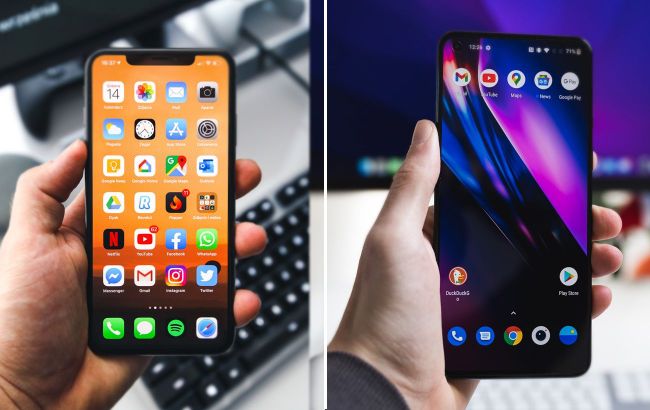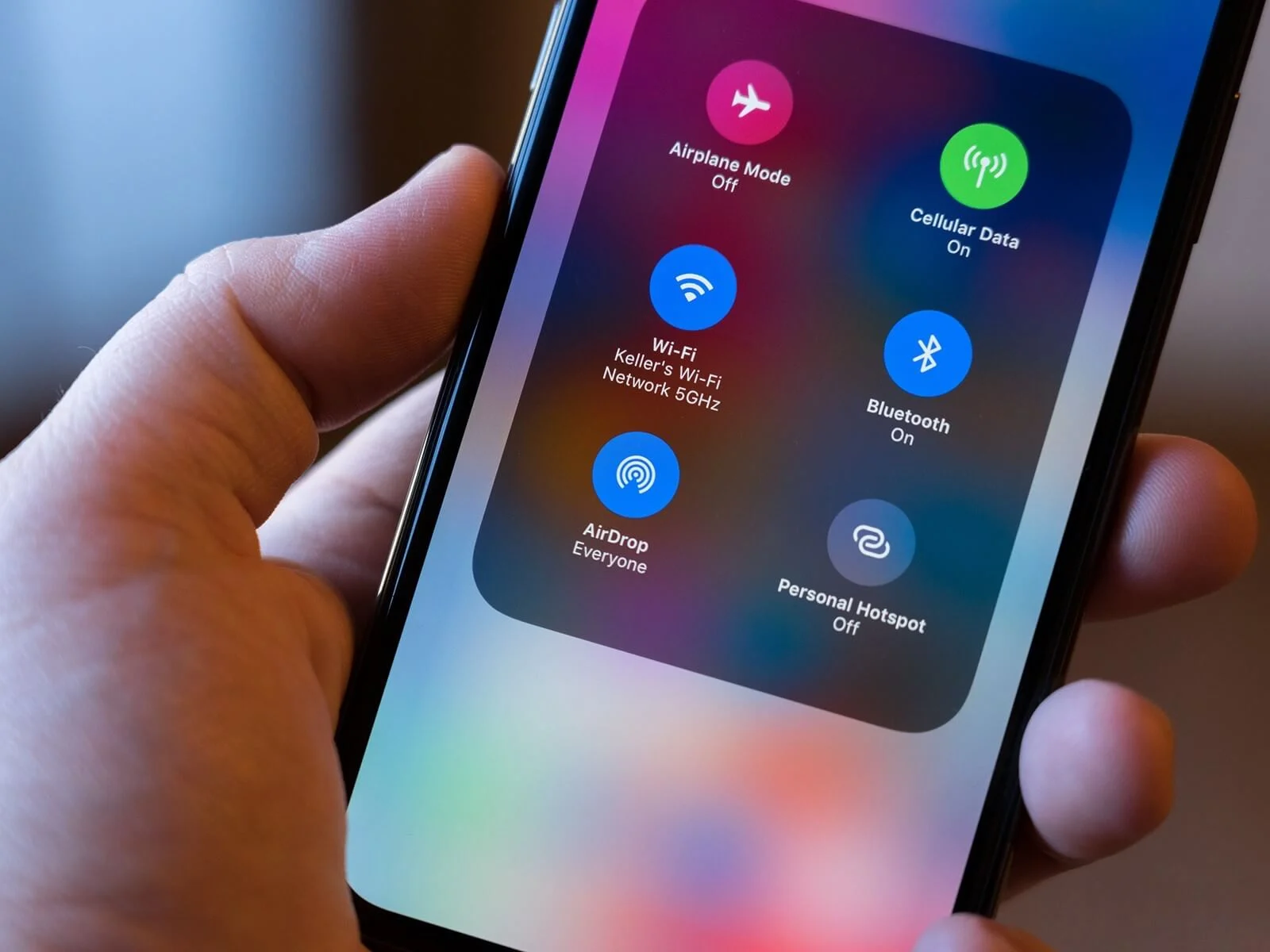10 functions Android could borrow from iPhone: Detailed review
 What functions could Android borrow from iPhone? (Collage: RBC-Ukraine)
What functions could Android borrow from iPhone? (Collage: RBC-Ukraine)
Many users consider Android as an operating system for mobile devices that offers numerous features and extensive customization options. In a sense, this is indeed true; however, it's worth noting that despite its rich functionality, Android, as before, lacks some capabilities available in iOS.
RBC-Ukraine has compiled 10 iPhone features that should definitely appear on Android, making the use of the operating system much more convenient.
Face ID
Face ID is facial recognition technology created by Apple for its devices. To unlock the iPhone, you simply need to look at its screen.
Face ID sensors use infrared rays for precise facial scanning, reducing the possibility of false recognition. The collected data is stored in a secure chip inside the iPhone and never leaves the device.
While many Android devices also provide facial unlock features, their capabilities are far from Face ID. These gadgets lack infrared front cameras, making Face Unlock inefficient in the dark and less reliable in person recognition.
Moreover, locking on an Android device can be tricked, for example, with a clear photograph, whereas Face ID maintains a high level of security. Even with glasses and a mask, the iPhone continues to reliably recognize its owner.

Face ID (photo: Unsplash)
Shake to Undo
Printing on iOS or Android devices is undoubtedly not as convenient as on a computer. This is not only due to the absence of a full-sized keyboard that can be used blindly with all ten fingers but also the lack of the familiar Ctrl+Z key combination, which allows undoing an action in case of an input mistake or accidental deletion of an important text fragment.
However, on the iPhone, there is a similar function known as "Shake to Undo." If you make a mistake, simply shake the phone, and it will undo the last action. This is genuinely convenient.
In contrast, Android devices lack a similar feature. Although undoing actions is available in most text editors, it is absent in messengers and similar apps, where it would be particularly useful.
Drag and drop of objects
On iPhone and iPad devices, there is the ability to drag various objects within apps, similar to how you do it on a computer with a mouse. You simply hold your finger on an image, text fragment, or attachment, move it to the bottom of the screen on the iPhone or in Split View mode on the iPad, and easily paste it into another program. This is truly convenient.
Unfortunately, such a feature is not present on Android, even on tablets.
Universal communication apps
iMessage and FaceTime on the iPhone stand out from other messengers and video calls. They not only have a user-friendly interface and diverse features but also stand out for their universality. Apple users can easily communicate with each other, regardless of whether they use a Mac, iPad, or iPhone.
In contrast, Android lacks such a universal means of communication. While the standard Messages and Google Meet are decent, they cannot compare with the functionality and ease of use of Apple's counterparts.
Moreover, not every Android smartphone has these apps by default. As a result, many manufacturers create their own messaging and calling apps.
Before contacting someone on Android, you have to find out whether the conversation partner uses Telegram, WhatsApp, or Viber, install the respective app, and go through the registration process. If Google had a universal communication app for all Android devices, it would make life much simpler.

FaceTime and iMessage (photo: Getty Images)
App Offloading
iPhone has a convenient feature capable of saving space on the smartphone's memory. It's called "App Offloading."
By enabling it in storage settings, you allow iOS to automatically free up space occupied by infrequently used apps. During this process, neither the app icon, nor the data, nor the documents are deleted, and you only need to tap on it to restore.
Unfortunately, this convenient feature is absent on Android. In case of insufficient space, you have to completely uninstall apps along with all settings. Upon reinstalling the apps, you'll have to restore all memory settings, which is also an inconvenient process.
Quick Switching Between Devices
The "Universal Clipboard" feature on iPhone allows copying text and images and transferring them between the iPhone and the nearest Mac without the need for cables or additional software. Thanks to the Handoff option, you can start working on a note, document, or email on an iPhone and continue on a Mac.
In contrast, Android phones are less integrated with Windows devices, despite Microsoft's efforts to address this situation. While there are various apps that allow phone calls from a computer, copying text, and transferring photos, they don't work as seamlessly as Apple's solutions.
The official Windows companion app for Android is unfortunately not the most stable solution, often losing connection with the computer and draining the battery.
AirPlay and AirDrop
AirPlay is Apple's wireless technology for transmitting audio, video, photos, and other data between iOS devices like iPhone, iPad, iPod Touch, and Mac computers. It is also compatible with other devices, such as TVs or audio systems that support this feature.
AirDrop, on the other hand, is a tool for instant wireless file and document transfer between Apple devices via Wi-Fi.
In contrast, Android lacks such an advanced tool for data exchange between devices. Although there is the Nearby Share feature positioned as an alternative to AirDrop and some apps on Google Play can wirelessly transfer audio and video content from Android devices, none of them can currently match the built-in AirPlay feature on iOS devices.

AirDrop and other functions on iPhone (photo: Unsplash)
Separated notifications and settings
If you swipe down from the central or left upper part of the iPhone screen, you open the "Notification Center." Swiping down from the right upper part takes you to the "Control Center," where you can easily adjust system settings, sound, brightness, enable focus mode, and much more. This is convenient and logical.
In Android, notifications and settings are not separated. When you open the "shade," if you need to change some parameters that are not immediately visible, you'll have to swipe down again. This might seem like a minor detail, but it eventually takes time.
Universal updates
Currently, there are slightly fewer than one and a half billion iPhone users worldwide. When it comes to updates for these smartphones, almost all of these people, at least those connected to the internet, receive updates and security patches practically simultaneously.
Moreover, iPhones are supported for a long time. The system continues to receive updates for a minimum of five years after the release of the device on which it was installed.
Android updates don't paint as rosy a picture. In most cases, manufacturers release one, two, or three major updates, after which they stop supporting their devices. If you need a new system version, it may mean having to purchase a new phone.

All users get iOS updates simultaneously (photo: Unsplash)
Camera continuity
The feature known as "Camera Continuity" allows scanning documents and capturing photos that instantly appear on a Mac computer. If you need to insert, for example, text from a paper in front of you, you can simply choose the "Import from iPhone or iPad" option in the Mac editor, press "Take Photo," and the "Camera" app on your smartphone will automatically open.
Android lacks a similar function. While apps like DroidCam or Camo allow streaming video from a smartphone to a PC, they are not as convenient as "Camera Continuity." Additionally, they require extra time for installation and setup, sometimes suggesting purchasing a Pro version to unlock high-quality image transmission.
It's worth noting that Android users will receive a feature that iPhone owners can only dream of.
We also wrote about 10 tips that can help extend the battery life of your Android smartphone.

